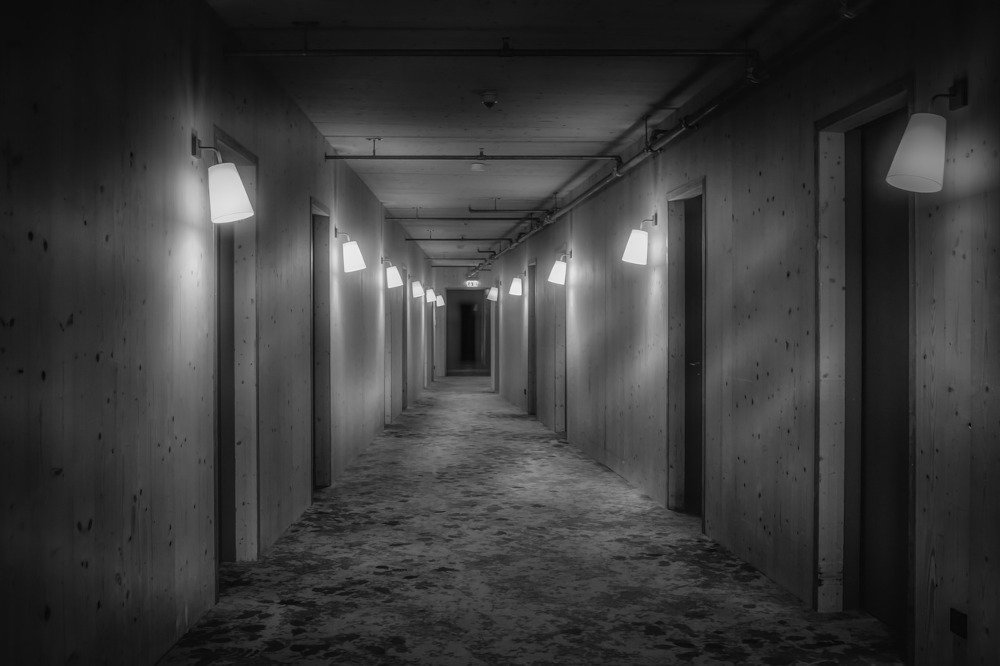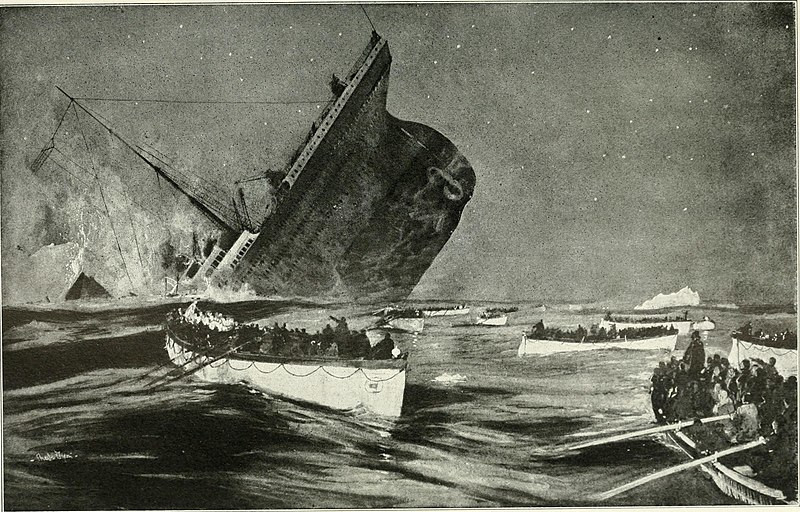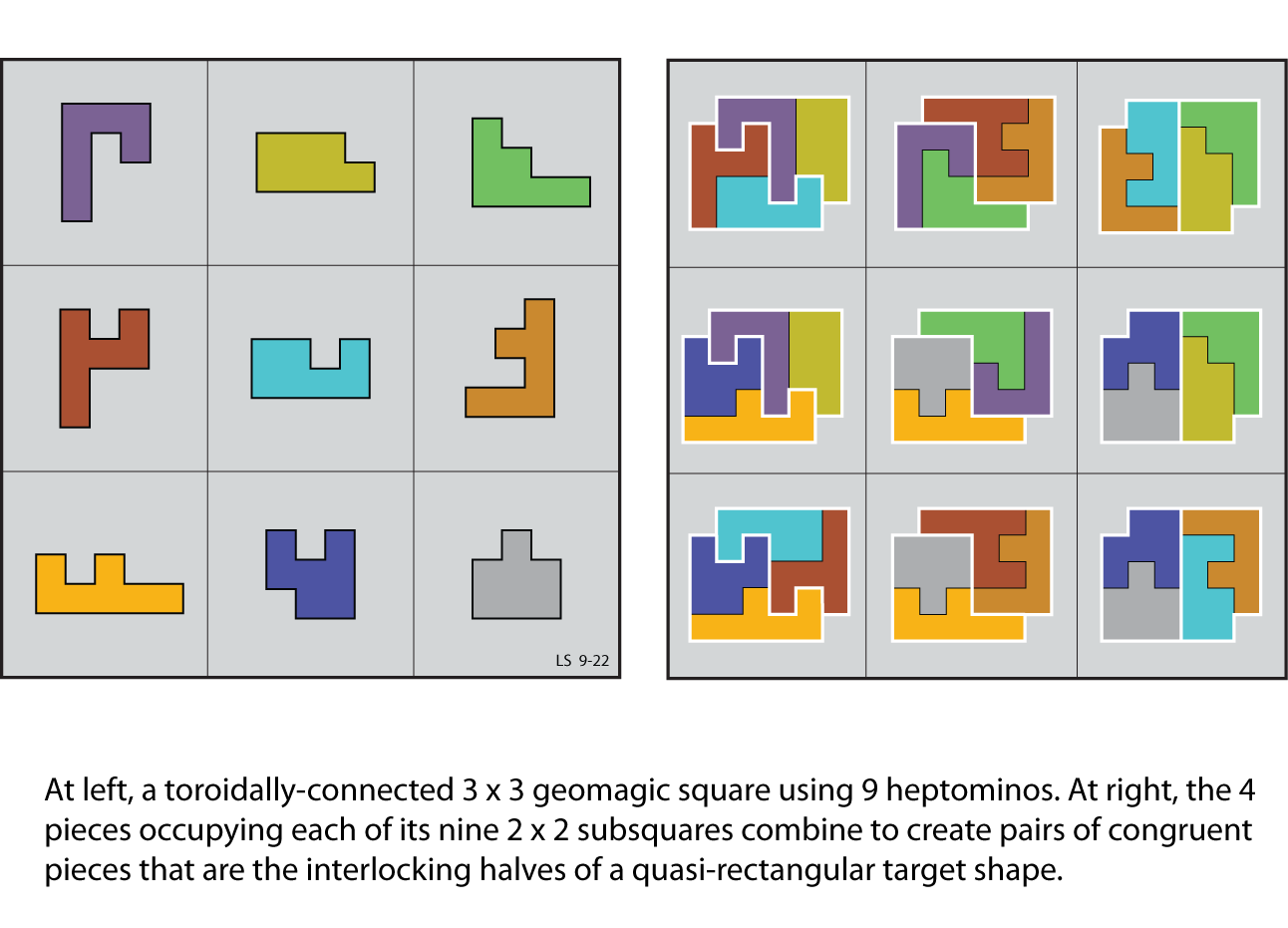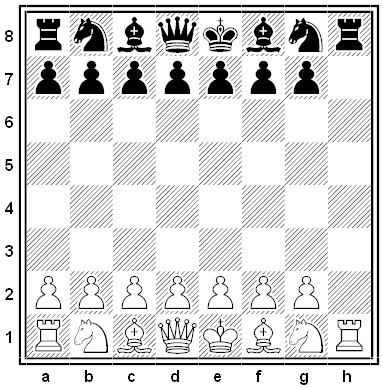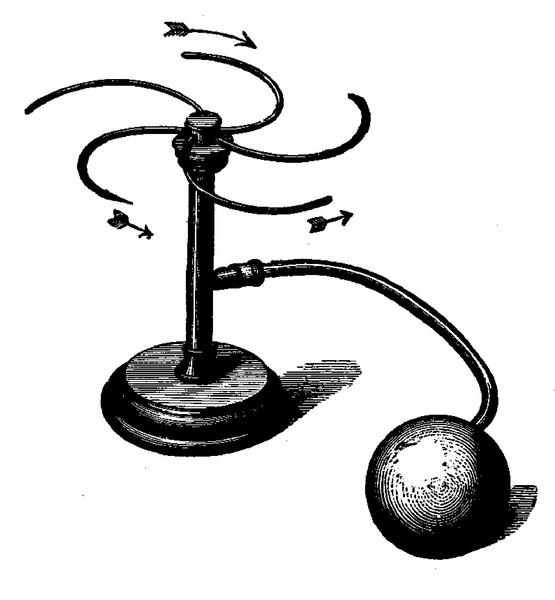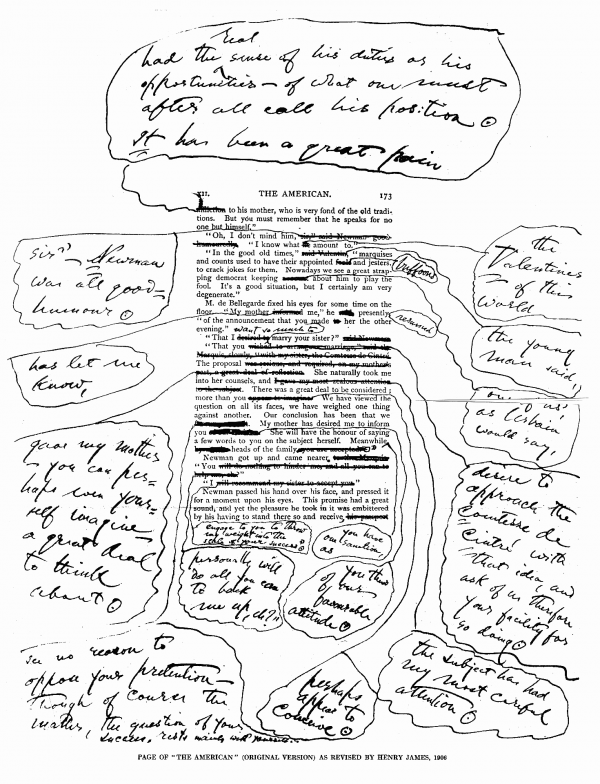
Literary scholar Robert Hauptman calls this “marginal emendation run amok” — it’s a page from Henry James’ 1877 novel The American as James revised it anxiously for a new edition in 1907. He had decided the plot was unconvincing and asked for so many changes that two copies of the book had to be inlaid page by page on larger sheets to give him room to mark all the revisions.
On the last page, above, “James has partially or fully crossed out 16 of the 19 lines and rewritten the text for the definitive New York edition in the margins and at the foot of the page,” notes Hauptman. “His scrawling alterations cover virtually all of the generous white space and must be inserted in at least three different locations in the original text. Words are blotted out or struck in the new version, and as he approaches the bottom of the page, the lettering diminishes in size, because he realizes that he will run out of room.”
“The work on the earlier novels has involved much labour — to the best effect for the vile things, I’m convinced,” James had written to Grace Norton that March. Modern critics generally disagree — most editions today use the original version.
(From Robert Hauptman, Documentation, 2008, and Harvard’s Marks in Books, 1985.)
